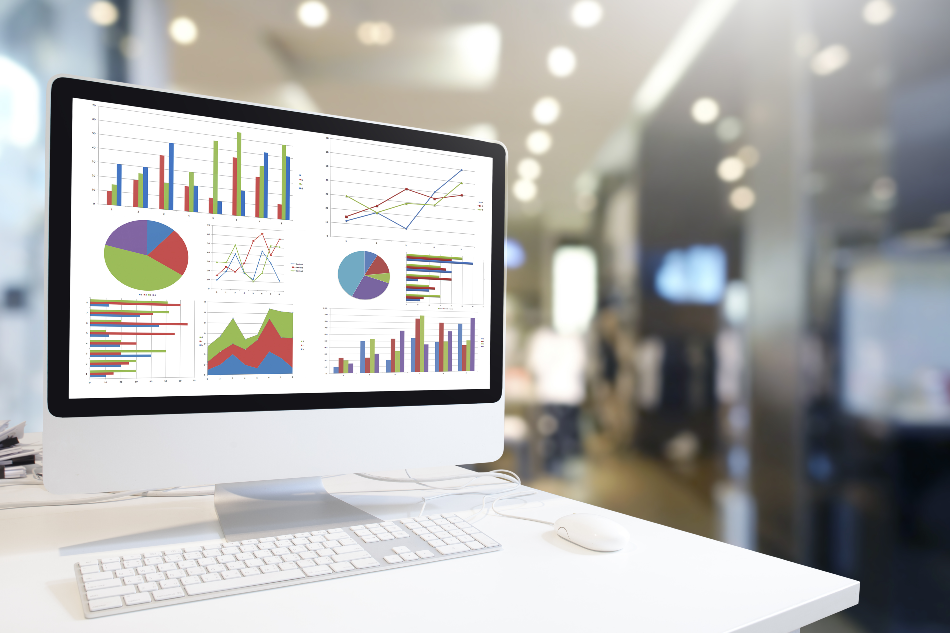
ChartsTable789 / Shutterstock
A computer requires sensor technology in order to operate effectively. Without the correct sensors, the apparatus is running blind and will fail. With so many different computers operating in the current age, the range of sensors used in each has grown to accommodate modern demands.
Computer Sensor Technology
An understanding of current computer sensor technology is essential to the design and implementation of any control system. Before we explore the different types of sensors currently in operation, it is important to understand the criteria used to judge a computer sensor as effective.
A viable sensor must display the following attributes:
- The sensor must be sensitive to the property it is measuring.
- The sensor must be sensitive to other properties likely to be encountered in the application.
- The sensor must not influence the property it is measuring.
Properties Measured by Sensors
Broadly speaking most sensors found within modern computers measure the following properties:
- Motion
- Pressure/Touch
- Temperature
- Proximity
- Light
- Sound
- Moisture
- Gases
There are more properties that a computer sensor can measure, but are often uniquely defined for a specific application of the sensing technology. Most modern computers use a combination of the measurements listed above in their sensor detection. So, what types of sensors can we find inside our phones, laptops and other day-to-day devices?
Limit Switches
Limit switches are one of the oldest and most basic of the modern sensors operating in 1 of 2 states: open or closed. They have to be touched or subjected to pressure to be operated (e.g. the home/power buttons on your phone, laptop or other devices). Whilst they are no longer used as much, this sensing technology is still applied where actuation and wear are minimal.
With modern smartphones, the sensors used often respond to a combination of touch, sound, pressure and light measurements, but the basic limit switch design is still applied (e.g. on or off).
Proximity and Temperature Sensors
Proximity and temperature sensors are other common sensors to be found in all modern computers and associated devices. With proximity sensors, non-contacts are favored, minimizing wear and tear. The most common proximity sensors are inductive, capacitive and optical with all being transducers that include control circuitry.
Temperature sensors are perhaps the most commonly known sensor in a computer, ensuring that the internal heat generated from processors and associated circuitry does not generate excessive heat or freeze. The most common temperature sensor to be found inside your phone or laptop is the thermistor; a fiber optic sensor composed of a thin film of gallium arsenide.
The film is deposited on the end of an optical fiber with the temperature detected from the reflected absorption transmission spectrum. Once the temperature within internal circuitry becomes too high, the sensors report to the cooling fans which then activate until the temperature is restored to the optimum level.
Motion Sensors
Motion sensors are another often found mark of modern computer technology. Found in your phone, iPod, laptop, and smartwatch, motion sensors have arguably changed the way we exercise in the past two decades.
However, motion sensors can also be found in computer-controlled agricultural management. Monitoring plant growth is essential in ensuring the highest crop yields. Temperature and moisture sensors combine with motion to deliver computer-controlled crop management in industrial greenhouses, minimizing human resources.
The motion sensors in smartphones and watches track daily movement, delivering step counts and data projection averages of how far you will move one day to the next based on historical results.
Modern Application
Motion sensors have also become commonplace in modern gaming devices like the Nintendo Switch. Nintendo utilizes infrared technology to transmit simple video feeds to the console screen as well as detecting heat sources. Called the ‘Motion IR Camera’ the sensor can be used to detect the shape and distance of something held in front of it, distinguishing between hand gestures and even tracking the opening and closing of someone’s mouth.
The sensors used in the first desktops and laptops were mainly limited to temperature control. Fast forward to 2012 and Microsoft introduced the Windows 8 Ultrabook which included a compass, an accelerometer, a gyroscope, a global positioning satellite detector system and an ambient light sensor.
Infrared Light Detection Sensors
Today, all modern laptops and smart devices now come with infrared light detection sensors as standard allowing screens to illuminate when an object is nearby and go dark when it is not. The accelerometer is a sensor that most people would know nothing about, but the way it senses a change in orientation by using a three-dimensional measurement of the acceleration of the device relative to the free fall is common to all smart devices.
Modern computers are in everyone’s hands, but an awareness of the sheer volume and variety of sensor technology within is often unrecognized.
Sources
Disclaimer: The views expressed here are those of the author expressed in their private capacity and do not necessarily represent the views of AZoM.com Limited T/A AZoNetwork the owner and operator of this website. This disclaimer forms part of the Terms and conditions of use of this website.